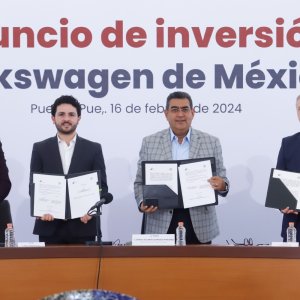Opportunities in a Post-Pandemic and Inflationary World

STORY INLINE POST
In April, Dr. Anthony Fauci, chief medical adviser to US President Joe Biden and perhaps one of the most respected voices regarding COVID-19, said, “We are certainly right now in this country out of the pandemic phase…". Considering this as a somewhat official announcement of the end of the COVID-19 pandemic, it’s interesting to ask the following question: What does the world economy look like after the pandemic?
According to an economic analysis by Mexican financial institution Monex, 11 of the 20 largest economies in the world have recovered their pre-pandemic 2019 GDP levels and the others will have done so by the end of 2022. However, we are clearly seeing consequences of a two-year long global shock to our economic system. Many important supply chains are still in disarray. Production capacities were quickly reduced at the beginning of the pandemic and were caught by surprise by the very quick and strong recovery of demand. This recovery was to a very large extent caused by huge stimulus packages in many countries, which have in turn caused inflationary pressures to increase to levels not seen in decades. On top of this, the war in Ukraine has put additional pressure on prices of many primary goods, especially on the cost of energy.
To fight these inflationary pressures, we are seeing dramatic increases in interest rates everywhere. Recently, the US Federal Reserve announced a 75-basis-point increase, the highest one-time increase in 28 years. Banco de México, Mexico’s central bank, is also expected to further raise interest rates in response to the Fed’s announcement.
Mexico’s government is also doing its part to try to control inflation. The Finance Ministry (SHCP) has repeatedly stated that Mexico’s federal government is committed to containing inflation. Mexico’s president just last week confirmed again that the price of gasoline and diesel will remain unchanged and that the continuity of the subsidy in the Special Tax on Production and Services (IEPS) on fuel is guaranteed.
The nature of Mexico’s inflation increase, however, is somewhat different than of other OECD countries, in that it is mainly imported, due to its levels of foreign trade, especially with the US. During the pandemic, the Mexican government applied very conservative strategies and did not launch any major economic support packages. It was severely criticized for doing so but, as a result, Mexico’s economy is now in a much better position than many other countries, especially those in Latin America, that did increase public debt to support their economies and now must face much higher-than-expected costs related to this financing.
Economic uncertainties like inflation, increased public debt levels, higher interest rates and the possibility of recession tend to have a negative impact on investment. However, at this moment, this is not the case in Mexico. The strategic advantages of investing in Mexico continue to be sound: Over the past three decades, Mexico has emerged as a manufacturing powerhouse, driven by free trade agreements with the US, Canada, and 44 other countries. Some 78 percent of exports are directed to the US and Mexican companies and suppliers are very familiar with doing business in the US and its standards for products and services. Many major US manufacturers have integrated supply chains with counterparts or operations in Mexico, a trend that with the re-thinking of global supply chains as opposed to more regional and local chains, will only increase. Mexico is also increasingly emerging as an exporter of technology, already holding the No. 12 spot globally. Data from the US Department of Commerce indicate that Mexico provided some 18 percent of all high-tech products imported into the US. It is also first among Latin American countries with the most patents granted by the US Patent and Trademark Office. On top of this, Mexico’s economy is strong and stable, with a clear commitment of even a left-leaning government to continue this.
As a reflection of this, the flow of foreign direct investment into Mexico continues. We’re already seeing good amounts of FDI for local projects in Queretaro, Jalisco and Nuevo Leon. Earlier this month, Queretaro’s governor announced having secured MX$2 billion in investments of European origin into his state, the government of Nuevo Leon confirmed a project called "the Mitras Project," with a foreign investment of almost MX$700 million (US$34,583,500).” In addition, the governor of Jalisco announced during a tour to Silicon Valley that his state had obtained investments totaling US$400 million.
B Due to Mexico´s economic stability, geographic location, high-quality labor force and experience in trading with other nations, the country continues to offer great benefits for foreign investments, particularly in sectors as diverse as agriculture, auto parts and services, aerospace, education services, environment technology, information technology, transport infrastructure, tourism and many others.








 By Karel van Laack | Holland House -
Tue, 07/19/2022 - 09:00
By Karel van Laack | Holland House -
Tue, 07/19/2022 - 09:00















